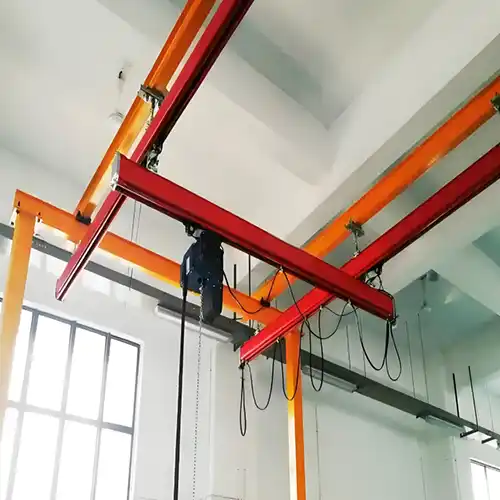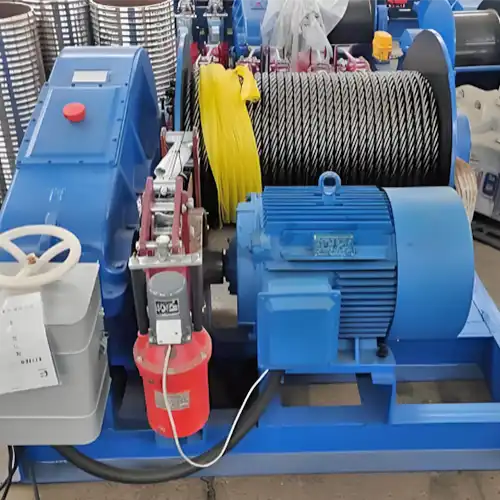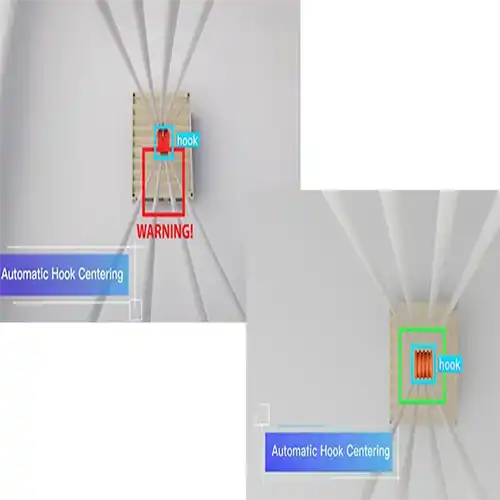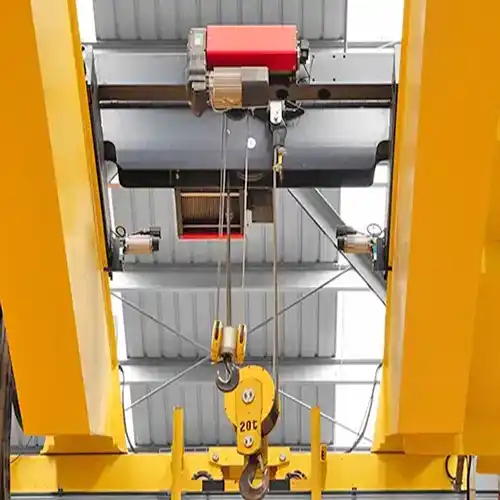Custom KBK Crane Layouts for Workshop Flexibility & Growth
Tailored KBK crane systems optimize space, adapt to workflow changes & support scalable growth workshops efficiently.Get your custom kbk crane!
Category: Featured
Your Trusted KBK Crane Manufacturer & Supplier
Custom KBK Crane Layouts for Workshop Flexibility and Growth
Introduction
KBK crane systems are known for their flexibility and modular design. Unlike fixed crane systems, KBK cranes are made up of individual components that can be easily connected, rearranged, or expanded. This means you can build a crane layout that fits your exact workshop space and needs.
In Swiss workshops and manufacturing plants, space is often limited and workflows can change quickly. A flexible crane system helps businesses adapt without having to invest in a whole new setup every time something changes. It makes moving heavy loads easier, safer, and more efficient.
The goal here is to help Swiss companies see how customizing their KBK crane layout can support their growth. By choosing the right design now, they can save money and time later. A good KBK crane system grows with the business — it doesn’t hold it back.
Key points to keep in mind:
- KBK cranes are modular — they come in parts that fit together.
- Flexibility means the system can be adjusted or expanded.
- Swiss workshops often need space-saving, adaptable solutions.
- Customizing the layout from the start helps avoid costly changes later.
- A smart crane layout supports both current needs and future growth.
Why Customizing KBK Crane Layouts Matters
Adapting to Evolving Production Demands and Workflow Changes
In today’s fast-paced Swiss industries, production needs don’t stay the same for long. New products, changing batch sizes, or updated processes mean your workshop layout must keep up. A customized KBK crane layout allows you to adjust your crane system as these demands evolve.
- You can add new sections or move parts to fit new workflows.
- It’s easier to handle different types of loads without buying new equipment.
- Changing customer requirements or regulations? Your crane layout can adapt without disrupting work.
Avoiding Costly Complete System Replacements Through Modular Expansions
Traditional crane systems are usually fixed. If your business grows or your production line changes, you might have to replace the whole system. That can be expensive and cause long downtime.
With KBK cranes, modular design means you only upgrade or expand parts of the system. You add new rails or hoists as needed, without tearing everything down.
- Save money by upgrading in phases, not all at once.
- Minimize downtime and keep production running smoothly.
- Future expansions become simple and cost-effective.
Enhancing Operational Efficiency and Space Utilization
Swiss workshops often face space limits. A customized KBK crane layout helps you make the most of your available space.
- You can design curves or multi-span runs to fit tight areas.
- Cranes can reach where they’re needed most, reducing time wasted moving loads around.
- Flexible layouts mean better workflow and fewer bottlenecks.
Supporting Long-Term Business Growth and Scalability
Planning ahead is key to staying competitive. A flexible KBK crane layout grows with your business, supporting new machines, products, or production methods.
- The system can handle increased load capacities when needed.
- Layout changes can accommodate new processes without costly rebuilds.
- Scalability ensures your crane investment works well for years to come.
When choosing a KBK crane layout for your Swiss workshop, it’s important to focus on what really matters: flexibility, cost savings, efficient use of space, and long-term growth. Below are the key benefits that customized KBK crane systems offer to help your workshop run smoothly today and be ready for tomorrow.
| Key Benefits of Customizing KBK Crane Layouts | What It Means for Your Workshop |
|---|---|
| Flexible to Changing Production Needs | Easily adjust crane layout as your workflows and loads change. |
| Cost-Effective Upgrades | Upgrade parts step-by-step without costly full replacements. |
| Optimized Use of Space | Fit cranes into tight or irregular workshop spaces efficiently. |
| Built for Future Growth | Expand or modify your crane system to support new products or processes. |
Key Features of Modular KBK Crane Systems
Components That Make Customization Easy
One big advantage of KBK crane systems is how their parts are designed to fit together like building blocks. This makes customization straightforward and flexible. The main components that let you adapt your crane system are:
- Rails: These are the tracks the crane runs on. KBK rails come in standard lengths but can be cut and joined to fit your exact workshop shape. They can be straight or curved, which lets you design more complex pathways.
- Hoists: These are the lifting devices attached to the crane that handle the loads. KBK hoists come in different weight capacities and can be moved along the rails or repositioned easily when your needs change.
- End Trucks: These are the parts that connect the crane to the rails and allow it to move smoothly. End trucks can be swapped or added to fit longer spans or new track layouts.
Because these parts are standardized but flexible, you can mix and match to build exactly what your workshop requires.
Modularity Supports Various Layout Configurations
KBK crane systems don’t just work in straight lines. Their modular design supports many different layouts, giving Swiss workshops the freedom to make the most of their space:
- Straight Runs: Perfect for simple, linear workflows where loads move back and forth along one path.
- Curved Rails: Great for tight or irregular spaces. Curved rails allow the crane to follow walls, avoid obstacles, or connect different work areas smoothly.
- Multi-Span Systems: When you need to cover a larger area or multiple stations, modular KBK systems can combine several spans with support beams and transfer sections. This creates complex networks of rails to serve many points without losing flexibility.
This versatility means you can create a tailor-made solution, whether you have a compact workshop or a larger manufacturing floor.
Quick Installation and Easy Reconfiguration
Another key benefit of KBK cranes is how fast they can be installed and changed later on:
- The modular components are lightweight and designed for quick assembly. This reduces installation time and labor costs.
- If your production line changes, you don’t need to replace the entire crane. You can add new rail sections, move hoists, or change the layout with minimal disruption.
- Maintenance is easier because individual parts can be swapped out without tearing down the system.
This means your crane system stays aligned with your business needs — without long downtime or costly rebuilds.
Modular KBK crane systems stand out because of their flexible, easy-to-customize design. They’re built from parts that fit together smoothly, allowing your workshop to have a crane layout that exactly matches your space and production needs. Here’s what makes these systems so practical for Swiss workshops:
| Key Features of Modular KBK Crane Systems | What It Means for Your Workshop |
|---|---|
| Customizable Components | Rails, hoists, and end trucks can be mixed, matched, moved, or expanded easily. |
| Flexible Layouts | Use straight, curved, or multi-span rails to fit tight spaces or cover large areas. |
| Fast Installation | Lightweight, modular parts speed up setup and reduce labor costs. |
| Easy Reconfiguration & Maintenance | Change layouts or replace parts quickly without shutting down operations. |
Assessing Workshop Needs for Flexible Crane Layouts
Analyzing Current and Projected Workflows
The first step in designing a flexible KBK crane layout is understanding how your workshop operates today — and how it might work tomorrow. Look closely at your production flow:
- What tasks require lifting or moving heavy loads?
- How often do these lifts happen during a shift?
- Are the loads always the same size and weight, or do they vary?
- What future changes do you expect in production volume or product types?
By answering these questions, you can plan a crane layout that fits your current needs and is ready for growth. For example, if you plan to add new machines or increase output, your crane system should be able to handle those changes without a full redesign.
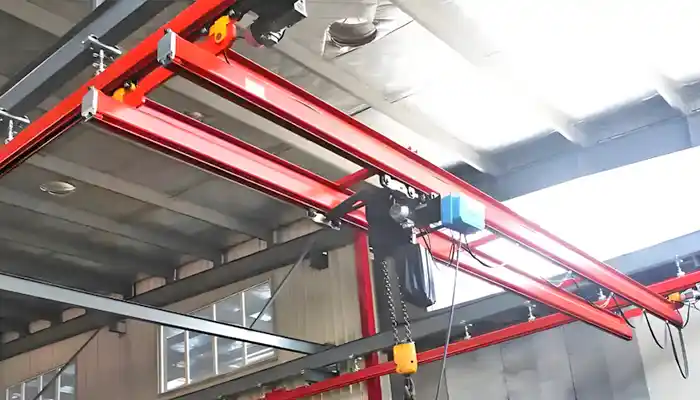
double girder modular kbk crane for sale
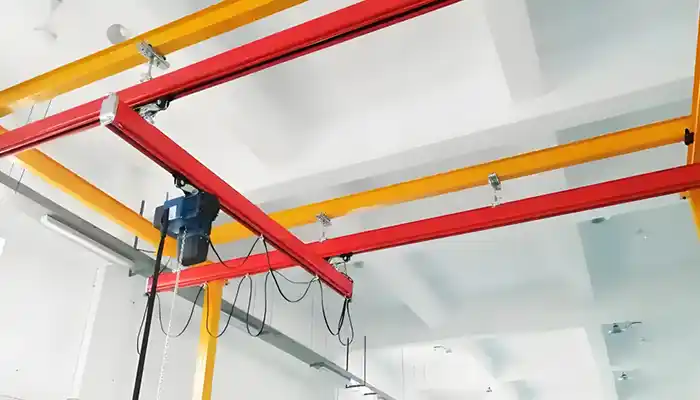
single girder modular kbk crane
Space Constraints and Building Architecture Considerations
Swiss workshops often face tight spaces or unique building structures. The shape and size of your workshop will heavily influence the crane design. Keep these points in mind:
- Ceiling height and available overhead space — how much room do you have for rails and crane movement?
- Obstacles like columns, walls, or existing equipment that might block certain crane paths.
- Access points such as doors and aisles that the crane system must accommodate.
- Floor layout and load-bearing capacity, which affects where support beams or columns for crane rails can be installed.
A customized KBK crane system can be designed to fit these limitations. Curved rails can work around obstacles, and compact layouts can make the best use of low ceilings or narrow spaces.
Load Handling Requirements and Movement Patterns
Understanding what you lift and how you move it is essential:
- What is the maximum weight of your typical and peak loads?
- Do you move loads in straight lines, or do they require complex paths?
- How precise do movements need to be — is gentle handling critical?
- Are the loads fragile or hazardous, requiring special handling features?
Your crane layout should allow smooth, safe, and accurate movement along the most common paths, reducing time spent repositioning loads or waiting for equipment.
Integration with Existing Equipment and Automation
Most workshops already have some equipment in place — conveyors, robots, or other material handling tools. Your KBK crane system should fit seamlessly into this setup:
- Can the crane run alongside or above existing machinery without interference?
- Is it possible to link crane controls with automated systems for synchronized operation?
- Does the layout support future automation upgrades or expansions?
Thinking about integration early ensures your crane becomes part of a smooth, connected workflow instead of a separate, disruptive tool.
Designing the right KBK crane layout starts with a clear understanding of your workshop’s needs today and in the future. This means looking at how you work, the space you have, what loads you handle, and how your crane will fit with other equipment. Here are the main points to consider:
| Assessing Workshop Needs for Flexible KBK Cranes | What It Means for Your Workshop |
|---|---|
| Understand Current & Future Workflows | Identify lifting tasks, load sizes, frequency, and upcoming changes in production. |
| Consider Space & Building Limits | Account for ceiling height, obstacles, access points, and floor strength. |
| Know Load Types & Movement Patterns | Define max load weights, paths (straight or complex), and precision needed. |
| Plan for Integration with Existing Systems | Ensure crane fits around machinery and can link with automation or conveyors. |
Customization Options and Solutions
Single and Multi-Span Configurations
KBK crane systems offer flexibility in how they span your workspace. You can choose:
- Single-span cranes: These cover a single, straightforward section, ideal for small workshops or focused tasks. They’re simple, cost-effective, and perfect where loads move along one path.
- Multi-span cranes: When your workshop is larger or has multiple workstations, multi-span setups link several crane sections together. This allows coverage over a wide area, with smooth transitions between spans, so the crane can move loads from one zone to another without interruption.
Multi-span systems are especially useful in Swiss factories where production is spread across multiple stations but still needs efficient material flow.
Curved and Flexible Runway Designs
Not every workshop has the luxury of straight, open spaces. KBK cranes can be customized with curved rails to navigate tight corners or irregular layouts:
- Curved runways let you work around obstacles like columns, machinery, or walls.
- This flexibility means you don’t have to rearrange your entire workshop just to fit a crane.
- It also enables creative layouts that maximize space usage and improve workflow by connecting different production areas smoothly.
Swiss industries, such as watchmaking workshops with compact spaces, often benefit greatly from these curved or flexible rail designs.
Integration with Other Material Handling Systems
KBK cranes don’t have to work alone. They can integrate seamlessly with other systems to create a connected material flow:
- Conveyors: Cranes can load and unload items directly onto conveyor belts, reducing manual handling and speeding up processes.
- Robots: Automated cranes can coordinate with robotic arms or automated guided vehicles (AGVs) for synchronized tasks, increasing precision and reducing errors.
- Integration allows Swiss factories to build smart, automated production lines that improve quality and efficiency.
Adding or Relocating Crane Sections with Minimal Downtime
One of the best things about KBK cranes is how easy it is to expand or modify the system later:
- Need to extend your crane runway? Just add more rail sections and end trucks.
- Want to move a crane line to a different part of the workshop? The modular parts can be disassembled and reinstalled quickly.
- This means you don’t have to stop production for long periods or spend a fortune on new equipment.
Swiss businesses value this because it keeps operations running smoothly, even as their needs change.
Examples of Customized KBK Layouts in Swiss Industries
- Precision Engineering: A Swiss precision parts manufacturer used a multi-span KBK crane system with curved rails to move delicate components safely between workstations, fitting the crane around existing equipment.
- Watchmaking: Small, curved crane runways in compact workshops help watchmakers handle tiny, sensitive parts with precision and care without wasting space.
- Electronics Manufacturing: KBK cranes integrated with conveyor belts allow fast transfer of electronic assemblies across different stages, supporting just-in-time production methods.
KBK cranes are designed to be flexible and adaptable, making them a great fit for Swiss workshops with changing needs. From simple single-span setups to complex multi-span and curved layouts, plus integration with other systems, these options help you build exactly what your workspace requires — with minimal downtime when changes are needed.
| Customization Options & Solutions | What It Means for Your Workshop |
|---|---|
| Single & Multi-Span Configurations | Choose simple single spans or link multiple spans to cover large, multi-zone areas. |
| Curved & Flexible Runways | Use curved rails to work around obstacles and fit tight or irregular spaces. |
| Integration with Other Systems | Connect cranes with conveyors, robots, or AGVs for smooth automated workflows. |
| Easy Expansion & Relocation | Add or move crane sections quickly with little impact on production time. |
Planning for Future Growth
Designing Layouts That Allow Incremental Expansion
When planning your KBK crane system, think beyond today’s needs. Swiss workshops that plan for growth design layouts that can expand step-by-step. Instead of building a large, expensive crane system upfront, start with what you need now, leaving space and options for adding rails or hoists later.
- Plan your workshop floor to allow easy extension of crane runways.
- Use modular components that can be added without changing existing parts.
- Ensure electrical and structural supports can handle future loads and extensions.
This approach means you won’t have to overhaul your whole crane system when your business grows — just add to it as needed.
Cost-Saving Strategies Through Modular Upgrades vs. Full Replacements
Replacing a whole crane system is expensive and causes downtime. Modular KBK cranes save money by allowing gradual upgrades:
- Add or upgrade hoists as load requirements increase.
- Extend rails in phases to cover new work areas without dismantling the entire system.
- Upgrade control systems incrementally, integrating new tech without replacing everything.
This phased investment reduces upfront costs and spreads expenses over time. It also helps avoid the risks of large-scale downtime and complex installation.
Future-Proofing Workshops for New Production Lines or Products
Swiss industries often innovate or diversify their product lines. A future-proof KBK crane layout supports:
- Changes in load size or weight by allowing heavier hoists to be installed later.
- New production processes by enabling rerouting or extending crane paths.
- Integration with new automation technologies as they emerge.
By building flexibility into your crane system from the start, you ensure your workshop can quickly adapt to market demands or technology changes.
Case Studies of Swiss Companies Successfully Scaling with Modular KBK Cranes
- A precision engineering firm in Zurich started with a single-span KBK crane to serve one production line. As demand grew, they added two more spans with curved rails to connect additional workstations, without halting operations.
- A watchmaker in Geneva used a modular curved crane system in a tight workshop space. When launching a new product line requiring larger parts, they simply upgraded the hoists and extended the runway, avoiding costly new infrastructure.
- An electronics assembly plant near Basel integrated their KBK cranes with robotic arms and conveyors. When production increased, they expanded their crane layout and added higher-capacity hoists, all done in phases to keep the line running smoothly.
Planning your KBK crane system with future growth in mind helps Swiss workshops avoid costly replacements and downtime. Modular designs let you expand gradually, upgrade parts step-by-step, and adapt quickly to new production needs.
| Planning for Future Growth | How It Benefits Your Workshop |
|---|---|
| Incremental Expansion Layouts | Start small, add rails or hoists later as your business grows without redoing all. |
| Cost-Saving Modular Upgrades | Upgrade hoists, rails, or controls in phases to spread costs and reduce downtime. |
| Future-Proof Design | Prepare for heavier loads, new products, and automation by planning flexible layouts. |
Working with KBK Crane Suppliers for Tailored Solutions
Importance of Supplier Expertise in Layout Design and Customization
Choosing the right KBK crane supplier is more than just buying equipment — it’s about partnering with experts who understand your unique workshop needs. Experienced suppliers bring deep knowledge of modular crane systems and can help you design a layout that fits your space, workflow, and future plans perfectly.
- They know how to balance crane capacity with cost-efficiency.
- They can recommend the best components — rails, hoists, end trucks — for your specific tasks.
- They help avoid common pitfalls like oversizing the system or underestimating installation challenges.
A skilled supplier ensures your investment delivers maximum value and long-term reliability.
Collaborative Planning and Site Surveys
The best suppliers don’t just take orders; they work closely with you from the start:
- They conduct site surveys to understand your workshop’s dimensions, obstacles, and structural limits.
- They discuss your production workflows, load handling needs, and growth plans.
- They use this information to create detailed crane layouts tailored to your exact requirements.
- This collaboration helps identify potential challenges early, avoiding costly mistakes during installation.
By involving your supplier in the planning phase, you get a solution that truly fits your business, not just a one-size-fits-all crane.
Support for Installation, Commissioning, and After-Sales Service
A good supplier doesn’t disappear after the sale. Their support continues through:
- Installation: Expert teams ensure your KBK crane system is assembled correctly, safely, and efficiently, minimizing downtime.
- Commissioning: They test and fine-tune the crane to ensure smooth operation, compliance with safety standards, and proper integration with your workflow.
- After-Sales Service: Reliable suppliers offer maintenance, spare parts, and technical support to keep your crane system running long-term.
- Many also provide training for your staff on safe crane operation and routine inspections.
This ongoing partnership helps prevent breakdowns and costly repairs, keeping your workshop productive.
Partnering with the right KBK crane supplier is key to getting a crane system perfectly suited to your workshop’s needs. Expert suppliers provide design advice, collaborative planning, and long-term support to maximize your investment.
| Working with KBK Crane Suppliers | Client Workshop Benefits |
|---|---|
| Supplier Expertise in Design & Customization | Tailored layouts that fit your space, workflow, and budget perfectly. |
| Collaborative Planning & Site Surveys | Early identification of challenges and customized crane system proposals. |
| Installation, Commissioning & After-Sales Support | Professional setup, smooth operation, plus ongoing maintenance and training. |
Conclusion
- Why Customized, Modular KBK Cranes Matter:
Tailored KBK crane layouts fit Swiss workshops like a glove. They improve safety, efficiency, and make the best use of space. Modularity means you get layouts that can be straight, curved, or multi-span—designed exactly for your needs. - Plan for Flexibility and Growth:
Don’t just solve today’s problems—think ahead. Flexible crane systems let you expand and adapt without big costs or downtime. Prioritizing growth means your crane system stays relevant as your business evolves. - Take the Next Step:
Swiss businesses should connect with knowledgeable KBK crane suppliers. Get expert help to design and install a system tailored to your operations. The right partnership means smoother installation, better performance, and ongoing support.
Related Products
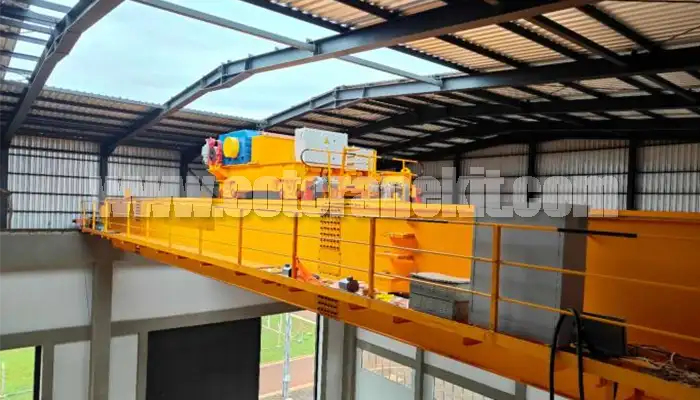
Latest project
150 Ton Overhead Crane Installation Feedback – Paraguay Case
QDX 150 ton overhead crane in action in Paraguay. Installation photos, video, and client feedback show performance, safety, and heavy-lifting efficiency.
Free consultation to Confirm Parameters & Specifications and Get
Latest Crane Price & Crane Rate.
- Types of overhead cranes : _______?
- Optional: Overhead travelling crane, goliath gantry crane,Slewing jib crane, Single girder or double girder crane,small portable crane or kbk crane, etc.
- Capacity of overhead crane: _______?
- Optional: 0.25ton, 0.5 ton, 1 ton, 2 ton, 3ton, 5 ton, 10 ton,15ton, 20ton, 25 ton, 30ton,35ton, up to 550ton, etc.
- Crane span & lifting height : _______?
- Crane travelling length : _____?
- Control of overhead crane:_______?
- Optional: pendant/ remote/cabin control
- Voltage supply of overhead crane:_____?
- Eg,: 380V50/60HZ,3Phase or others,etc.
- Application/usage of crane:_______?
- Eg,: Steel mill, ,injection mold, cement,stone, concrete,granite, general manufacturing, etc.
Just leave a message via the contact form and our hoist and crane engineer will contact you with in 24working hours.
Get In Touch
